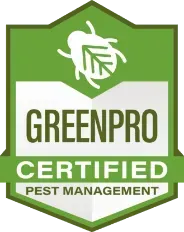Common Spiders of Southern Utah
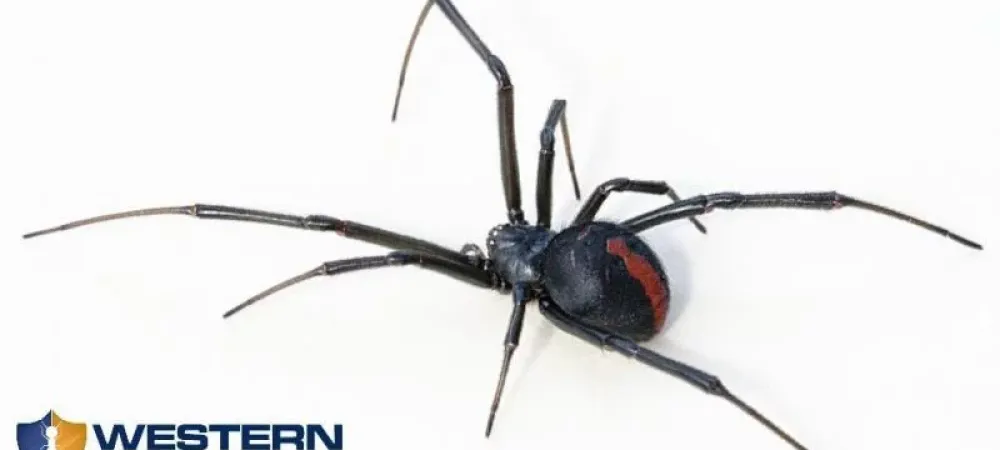
While there are over 4,000 different species of spiders in North America alone, we have compiled a list of the most common spider species in Utah. To help protect your family from dangerous species, we have broken this blog into a section on the most common and one on venomous spiders that you might encounter in Utah.
Common Spiders in Utah
While all species of spiders are technically venomous—as they use their venom to hunt—most spiders are not dangerous to humans. In most cases, the spider's bite can not penetrate the skin, or its venom is so mild that it will not affect the individual bitten, meaning that they do not pose a threat to humans. Here is a short guide to the most common spiders that can be found in Southern Utah.
Hobo Spider
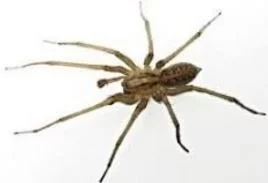
Native to Europe, the aggressive house spider, or western hobo spider, was accidentally introduced to the Northwestern United States in the 1980s. Fortunately, they are found primarily in Washington, Oregon, Wyoming, Colorado, Northern Utah, Montana, and the Pacific Northwest United States.
Hobo spiders belong to the family Agelenidae, a group of arachnids known for their funnel-like web construction. They spin horizontal layers of entangled silk threads that serve as nests, detection devices, and traps for potential prey. Male hobo spiders are more likely to bite humans because they roam around in the open more often than females, so they encounter humans more often than females.
- Size: Hobo spiders typically have a leg span of about 1 to 1.5 inches (2.5 to 3.8 cm), with the body being around 0.4 to 0.6 inches (1 to 1.5 cm) long.
- Coloration: They have a light to medium brown color with a slightly darker brown or gray abdomen. Their legs are often darker and may have lighter bands.
- Body shape: Hobo spiders have a stout and robust body with a slightly flattened appearance. Their legs are relatively long and evenly spaced.
- Web structure: They build funnel-shaped webs in corners, crevices, or other sheltered areas. These webs have a distinctive funnel-like entrance where the spider typically resides.
- Eye pattern: Hobo spiders have a characteristic eye arrangement known as the "dysderid" pattern. They have three pairs of eyes in a vertical row, with the middle pair being the largest and most prominent.
Wolf Spider
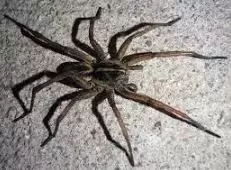
Despite the fact that these are dangerous-looking arthropods, they aren’t actually hazardous to humans. Their abdomens have several chevron-shaped markings. The two large palpi (mouth-parts) that look like boxing gloves make it easy to distinguish the male from the female. Additionally, adult females tend to have a larger and rounder abdomen when compared to males. Wolf spiders like to roam alone at night to stalk their prey, so they will most likely be in hiding during the day.
- Size: Wolf spiders vary in size, but most species have a body length of around 0.4 to 1.4 inches (1 to 3.5 cm). Their leg span can be up to several inches.
- Coloration: They typically have a combination of dark brown, gray, or black markings on a lighter background. The coloration may help them blend into their surroundings.
- Body shape: Wolf spiders have a stout and compact body with a slightly flattened appearance. Their legs are robust and covered in hair.
- Eye pattern: Wolf spiders have a distinctive eye arrangement known as "diurnal" or "anterior median" eyes. They have eight eyes arranged in three rows, with the bottom row consisting of four smaller eyes, the middle row with two large eyes, and the top row with two medium-sized eyes.
- Hunting behavior: Unlike many other spiders, wolf spiders are active hunters. They do not construct webs to catch prey but rely on their speed and excellent vision to chase and capture their food.
Banded Orb Weaver
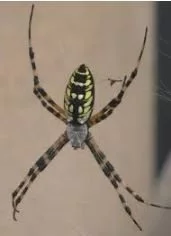
There are many different species of Orb Weavers that differ in color, shape, and size. Despite their menacing appearance, banded orb-weaving spiders are not harmful.
- Size: Banded orb weavers typically have a body length ranging from 0.2 to 1 inch (0.5 to 2.5 cm), with females being larger than males. The leg span can vary but is generally larger than the body length.
- Coloration and pattern: They have a distinctive banded or striped pattern on their abdomen, which gives them their name. The coloration can vary between species but often includes a combination of black, brown, yellow, or white bands. The cephalothorax (head and thorax region) is usually a solid color.
- Body shape: Banded orb weavers have a rounded and plump abdomen with a relatively small cephalothorax. Their legs are typically long and slender.
- Web structure: They build orb-shaped webs, which are large, circular, and intricate in design. The webs are typically positioned horizontally, with the spider residing in the center or off to the side.
- Habitat: Banded orb weavers are commonly found in gardens, meadows, and forested areas. They prefer locations with vegetation where they can anchor their webs.
Ground Spider
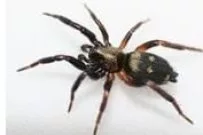
These are found on every continent in the world except for Antarctica and reside in a variety of habitats. Ground spiders are most likely to be found beneath rocks, logs, and other objects on the ground (they are called ground spiders, after all.) They are reclusive in nature and rarely leave their homes other than to hunt.
These spiders may venture indoors, especially when temperatures drop, but in this case, they will be few in number and not likely to be seen. Surprisingly, ground spiders do not trap prey in a web, as a matter of fact, they hunt for insects during evening and night hours. During the day they conserve energy by hiding under rocks or logs or indoors in a dark place.
- Size: Ground spiders vary in size, but most species have a body length ranging from 0.1 to 0.6 inches (0.25 to 1.5 cm), with females often being larger than males.
- Coloration: They typically have a combination of brown, gray, or black coloration. Some species may have patterns or markings on their bodies, but the coloration tends to help them blend into their environment.
- Body shape: Ground spiders have a relatively flat and elongated body shape. They are usually not as plump or round as some other spider species. Their legs are typically long and sturdy.
- Eye pattern: Ground spiders have eight eyes arranged in two rows, with the front row containing four smaller eyes and the back row having four larger eyes. The arrangement and size of the eyes can vary between species.
- Hunting behavior: As their name suggests, ground spiders are active hunters that primarily dwell on the ground. They do not construct webs to catch prey but instead chase and capture their food.
Poisonous Spiders in Utah
While the spiders listed above are fairly common, so are these two. Black Widows and the Desert Recluse Spider are the two most dangerous spiders in Southern Utah, but extremely dangerous. Not only do they have painful bites, but they are dangerous and can even be life-threatening for children and the elderly.
Black Widow
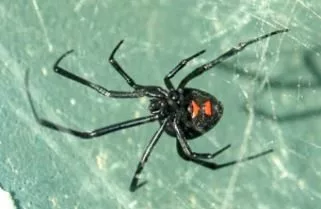
One of the most venomous spiders found in North America is the female Black Widow. The venom of the black widow spider is 15 times as toxic as the venom of the prairie rattlesnake. This venom attacks your nervous system, and some people may have little to no reaction while other people can become very ill. This bite can be deadly for small children, so it's important that you seek medical attention immediately. Only the female black widow is dangerous to humans, unlike the males and juveniles which are harmless. The female black widow will, on occasion, kill and eat the male after mating.
Desert Recluse Spider
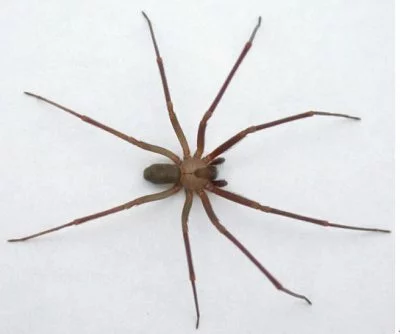
This is definitely one I hope I don’t come across! The Desert Recluse, also known as a Brown Recluse Spider, is usually a tan to dark brown color and 1/4 – 1/2 inch long. The desert recluse is known for the fiddle-shaped marking on its back. One of their tell-tell features is the fact that they have 6 eyes instead of the normal 8. They tend to stay away from populated areas, they like the outdoors and are often found in packrat dens. The Desert Recluse is highly venomous! In the event that you are bitten by one of these poisonous spiders seek medical attention and if possible bring the spider with you.
Spider Control and Prevention
If any of these spiders have found their way into your home or garden shed, the best way to control their presence is by removing their source of food. Spiders primarily eat other insects, so reducing insect populations in your home will make spiders less interested in invading your home.
Some spiders, such as the desert recluse and ground spider, rest beneath boxes, in closed spaces, and other objects that will provide them shade and protection. Regularly cleaning your garage or shed will disrupt their habitat and make them less comfortable in your space.
We've compiled a list of steps you can take to deter spiders from remaining in your home:
- Pick up clutter such as magazines, newspapers, boxes, dirty clothes, or other belongings that will provide spiders with cover and safety. Spiders avoid clean spaces because there are few places for them to hide.
- Replace or fix torn window screens
- Use caulk to fill gaps or crevices in your windows and doors
- Turn off outdoor lights when you are not outside as to not attract other pests such as moths or flies, the presence of those pests alone will attract spiders to your property
- Remove shrubbery or vegetation from the base perimeter of your home, as they provide shelter for spiders
- Sweep or vacuum spider webs and egg sacs when you see them
- Keep food in a tightly sealed storage container, which will eliminate cockroaches, ants, and other pests that spiders feed on
If you can't seem to rid your home of spiders, look to a local pest control company like Western Pest Control—our spider exterminators will thoroughly treat your property with efficient products to remove spiders and keep them gone for good. Contact us today or check out our pest control services! We offer pest control in St. George, Washington, Cedar City and beyond!


